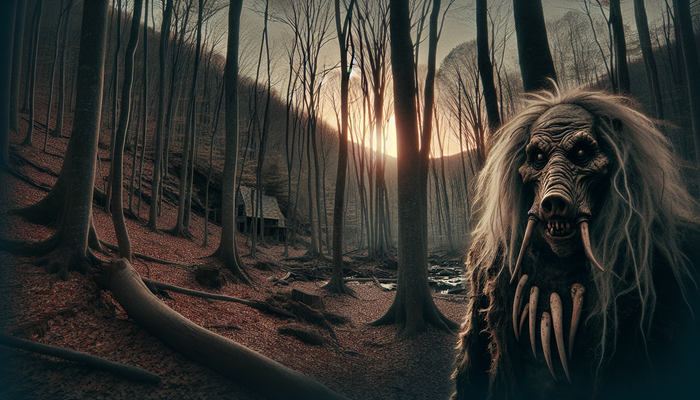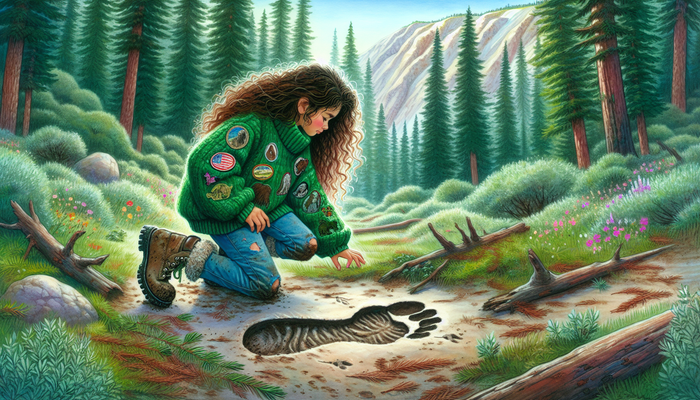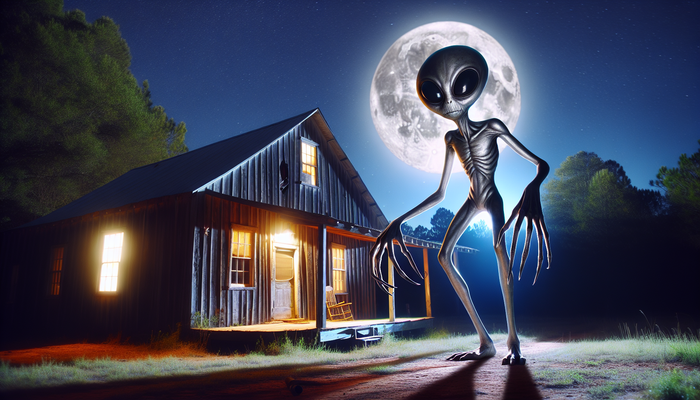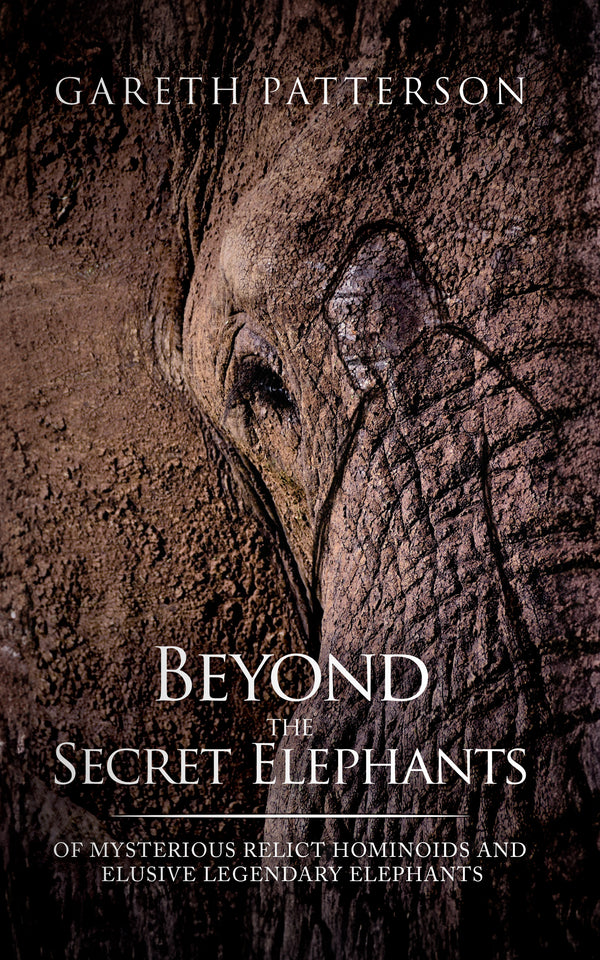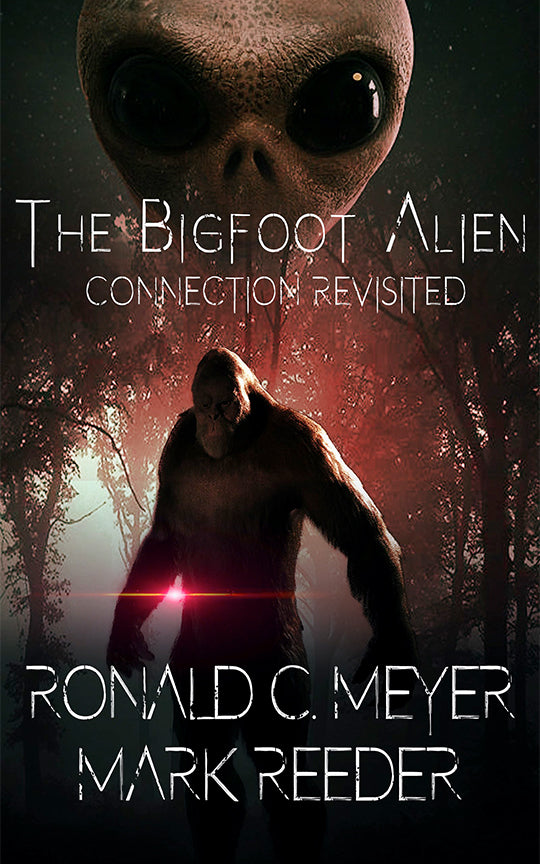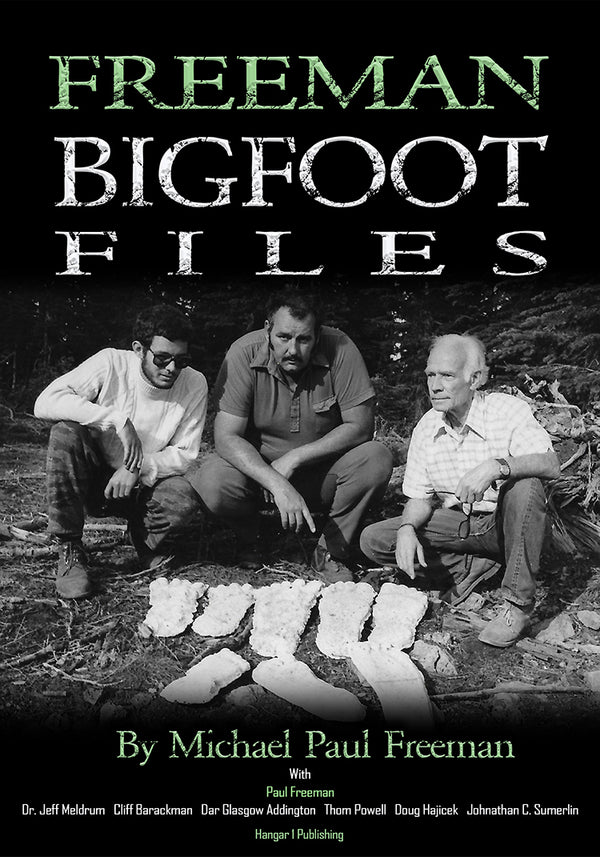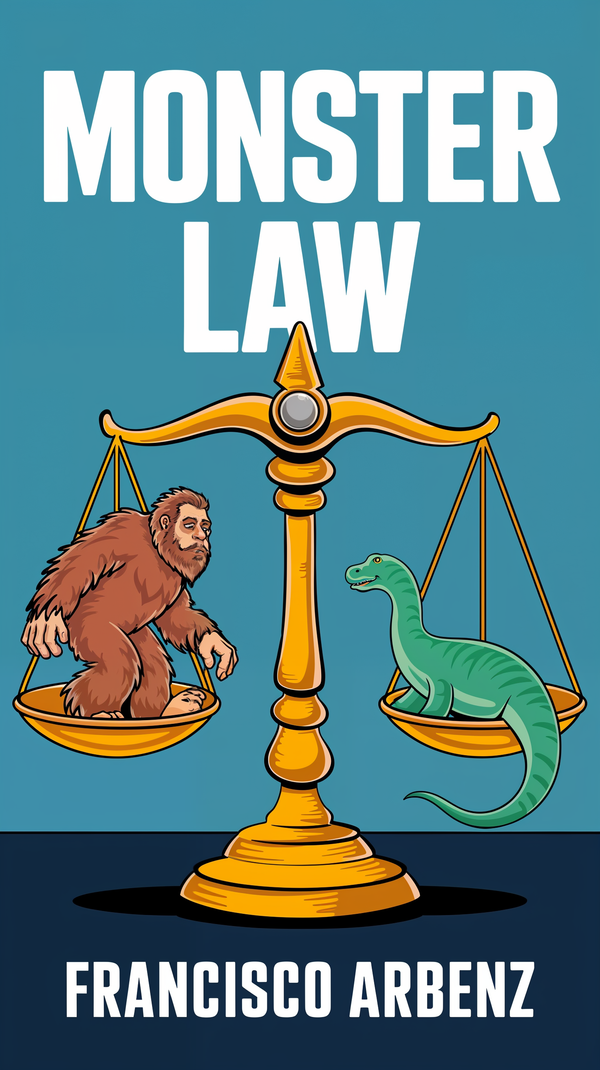Indiana's Bigfoot Encounters and SIghtings
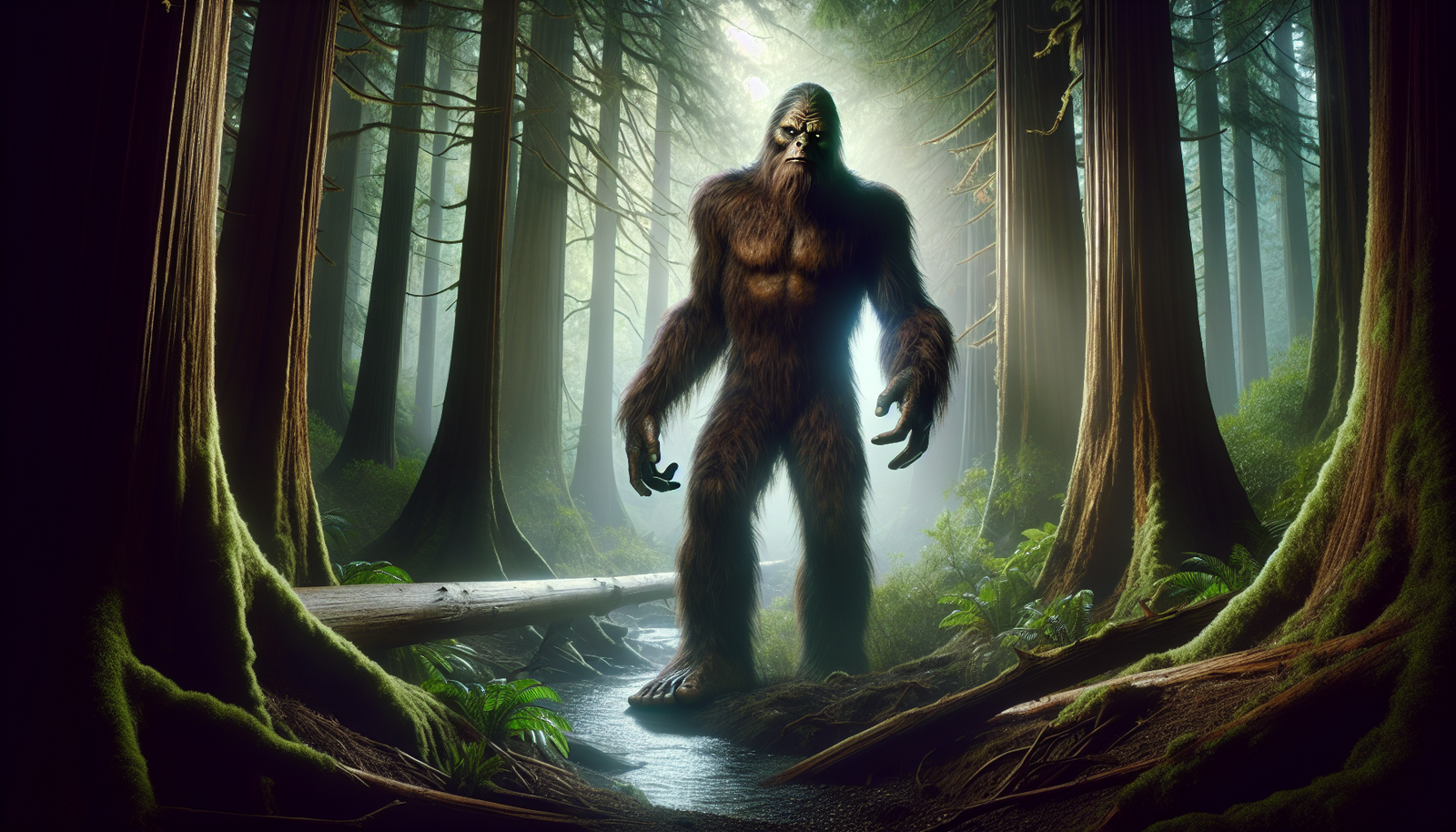
By Ava Martinez, Cryptozoologist
Picture this: a hairy, towering creature, eyes glowing in the darkness, lurking in the dense forests of... Indiana? Yes, you read that right. While the Hoosier State may not be the first place that comes to mind when you think of Bigfoot, it has a surprisingly rich history of encounters with this elusive cryptid. From the infamous Mill Race Monster to the Crosley Monster, Indiana has been a hotbed of Bigfoot activity for decades. As a cryptozoologist and biology teacher with a passion for unraveling nature's mysteries, I've been fascinated by the compelling evidence, eyewitness accounts, and theories surrounding Indiana's Bigfoot sightings. Join me as we delve into the depths of this intriguing phenomenon and explore the stories that have captivated Hoosiers for generations.
The Hoosier State's Bigfoot Hotspots
The Mill Race Monster of Columbus
Our journey begins in the quaint city of Columbus, where the Mill Race Monster sent shockwaves through the community in November 1974. It all started when a group of teenage girls visited Mill Race Park and spotted a large, hairy creature with a green face lurking between two trees near the boat ramp. Terrified, they fled the scene and reported their sighting to the police. Later that same evening, two women sitting in their car at the park had a far more harrowing encounter. A 7-foot tall, hairy beast with fangs and claws attacked their vehicle, leaving scratch marks in its wake. The women managed to escape, but their story quickly spread, igniting a public frenzy.
As news of the "Mill Race Monster" circulated, more witnesses came forward. In the days that followed, four additional people reported seeing the creature. The Columbus Police Department found themselves in a challenging position, having to balance public safety with the growing hysteria. They increased patrols in the park and began turning away the crowds of curious onlookers who descended upon the area, armed with baseball bats, shotguns, and a thirst for adventure. Despite the numerous sightings, the Mill Race Monster was never seen again after that fateful November. But its legacy lives on, a testament to the enduring mystery of Indiana's Bigfoot.
The Crosley Monster of Vernon
Deep in the heart of the Crosley Fish and Wildlife Area, just south of the town of Vernon, another legendary creature has been making its presence known for decades. The Crosley Monster, as it's come to be known, has a history of sightings dating back to the 1950s. But it was in the early 2000s that this elusive beast truly made its mark.
In August 2001, three friends were exploring the heavily wooded area when they caught a whiff of an overpowering, urine-like odor. Suddenly, they spotted a creature that defied belief: standing 8.5 to 9 feet tall, with a massive, cow-like head and eyes the size of silver dollars. The friends, in a panic, began hurling rocks at the beast, but it seemed unfazed. It slowly followed them as they retreated, before vanishing into the dense foliage as mysteriously as it had appeared.
Fast forward to July 2006, when a group of four young men had a terrifying encounter with the Crosley Monster while camping and fishing in the area. As they shone their flashlight into the woods, they were met with a sight that would haunt their dreams: an 8-foot tall creature with glowing eyes, shaking tree limbs in an aggressive display. The campers fled for their lives, with the beast giving chase on all fours before disappearing into the night. These chilling encounters have solidified the Crosley Monster's place in Indiana's Bigfoot lore, a reminder that even in the most unexpected places, mysteries still abound.
Hoosier National Forest and Beyond
The Hoosier National Forest, a vast expanse of over 200,000 acres, has been a magnet for Bigfoot activity. In March 1998, a hiker was setting up camp along a horse trail when he spotted a 7-foot tall, hairy, ape-like creature with large, dark eyes and a conical head. The hiker, startled by the encounter, yelled and ran, hiding behind a tree before deciding to leave the area entirely.
Fast forward to May 2012, when a couple renting a cabin at Greenbrier Lake in Brown County had a strange experience of their own. Their dogs began barking frantically at something outside, and when the man went to investigate, he was met with a strong odor and the sound of heavy breathing. While he couldn't see anything in the darkness, he did find large, wet footprints on the porch. The dogs, clearly unsettled, refused to go outside for the rest of the night.
More recently, in May 2020, a father and his 11-year-old daughter were turkey hunting in Yellowwood State Forest when they spotted a creature that was at least 6-8 feet tall, muscular, and covered in gray fur. The creature's arms were so long that they nearly reached its knees. As soon as it noticed the pair, it bolted away at an incredible speed, leaving them stunned and questioning what they had just witnessed.
These sightings, spanning decades and occurring in various parts of the Hoosier National Forest, paint a picture of a persistent Bigfoot presence in the area. The dense woods, rugged terrain, and remote locations provide the perfect habitat for a creature that seems to thrive on remaining just out of reach.
Monroe County: Indiana's Bigfoot Epicenter
If there's one place in Indiana that could be considered the epicenter of Bigfoot activity, it's Monroe County. Home to the sprawling Lake Monroe and surrounded by the Hoosier National Forest, this region has been the site of numerous compelling Bigfoot encounters over the years.
In November 1979, a group of cavers were exploring a pit cave near Harrisburg, on the western edge of Lake Monroe. As one of the cavers waited by his jeep for the others to return, he noticed a shadowy figure walking along the tree line. At first, he thought it might be another hiker or the landowner, but as the figure crossed a small clearing, he was shocked to see a 7-foot tall, fur-covered creature staring him down. After a tense 10-second standoff, the creature turned and disappeared back into the woods, leaving the caver questioning what he had just witnessed.
Nearly a decade later, in November 1988, a hunter had a similar encounter in the Morgan-Monroe State Forest, just north of Lake Monroe. As he was preparing to leave the woods, a large, muscular, fur-covered creature with long arms and hands that reached its knees crossed the road in front of him. The creature seemed unperturbed by the hunter's presence and continued on its way into the forest.
Perhaps one of the most bizarre sightings in the area occurred in October 1989, when two sisters were driving home late at night near Unionville. They encountered a 4.5 to 5-foot tall, fur-covered creature that resembled an orangutan more than the typical towering Bigfoot. The sisters were baffled by the sighting, which seemed to defy the usual descriptions of the cryptid.
These incidents, along with numerous others, have cemented Monroe County's reputation as a hotbed of Bigfoot activity. The combination of dense forests, rugged terrain, and proximity to water sources like Lake Monroe creates an ideal habitat for a creature that seems to thrive in remote, undisturbed areas.
Bigfoot Sightings Across the State
While Monroe County may be the epicenter of Bigfoot activity in Indiana, sightings of the elusive creature have been reported throughout the state. From the limestone caves of Lawrence County to the remote forests of Morgan-Monroe State Forest, Bigfoot seems to have left its mark on the Hoosier landscape.
In 1981, a Marine home on leave had a startling encounter in Lawrence County. While driving down a gravel road with a woman, they spotted a 7-foot tall, fur-covered creature crossing the road in front of them. The Marine, armed with an M1 Carbine rifle, cautiously approached the creature, but it simply stared at them before disappearing into a nearby cornfield.
The Cave River Valley, near the town of Campbellsburg, has also been the site of several unsettling Bigfoot encounters. In August 1998, a group of friends camping in the valley heard strange noises and even witnessed a long, hairy arm reaching into their van to steal food. The following year, the same group returned, only to be stalked by the sound of heavy footsteps circling their campsite and a giant, hairy head peering into their tent.
More recently, in October 2015, a hunter in the Morgan-Monroe State Forest had a chilling encounter with what he believed to be a Bigfoot. While in the woods, he heard "the loudest howl I have ever heard," a sound that he claimed "still haunts me to this day." The hunter, convinced he had stumbled upon the creature's territory, quickly fled the area.
Even in the more populated regions of the state, Bigfoot sightings have occurred. In June 1980, a man in Vanderburgh County, while feeding his rabbits, spotted a dark, hairy figure walking through the brush. As he called out to it, the creature swayed back and forth before approaching him, revealing its deep eye sockets and black, hairy body. The man, terrified, ran back to his house, questioning what he had just witnessed.
These sightings, spread across the state and spanning decades, suggest that Bigfoot's presence in Indiana is not limited to a single hotspot. The creature seems to be able to navigate various terrains and habitats, from dense forests to remote caves, and even venture into more populated areas on occasion.
Connecting Bigfoot to Indiana's Folklore and History
The Bigfoot phenomenon in Indiana is not a modern invention; it has deep roots in the state's rich folklore and history. For centuries, stories of hairy, man-like creatures have been passed down through Native American oral traditions. These legends, which bear a striking resemblance to modern Bigfoot sightings, suggest that the creature has been a part of the Hoosier landscape for far longer than we might imagine.
In addition to Native American folklore, Indiana's Bigfoot lore also has intriguing connections to the state's French colonial history, particularly the legend of the "Loup Garou." This werewolf-like creature was said to prowl the wilderness around Vincennes in the 18th century, terrorizing settlers and travelers alike.
According to historical accounts, the French settlers of Vincennes believed that one could become a Loup Garou by neglecting their religious duties, specifically by failing to attend mass and receive the sacraments for seven years. These werewolf-like creatures were reported to attack unsuspecting individuals along the Cathlinette Road, south of the town.
One such story, told to historians in 1935 by an elderly French woman, describes a terrifying encounter between a man named John Vatchet and a Loup Garou in an old French graveyard. Vatchet claimed to have fought for his life against the creature, which transformed from a "wild animal" into a man after being cut with a knife.
The similarities between the Loup Garou legends and modern Bigfoot sightings are striking. Both involve large, hairy, humanoid creatures that lurk in the wilderness and instill fear in those who cross their path. It's possible that these old werewolf tales, passed down through generations, have influenced or even inspired some of the Bigfoot sightings reported in southern Indiana over the years.
By connecting the Bigfoot phenomenon to Indiana's rich folklore and history, we can gain a deeper understanding of how these legends have shaped the state's cultural landscape. The persistence of these stories, from ancient Native American traditions to French colonial tales, suggests that the idea of a hairy, man-like creature roaming the wilderness has captured the imagination of Hoosiers for centuries.
Investigating Indiana's Bigfoot Phenomenon
As the Bigfoot phenomenon has gained traction in Indiana, dedicated researchers and organizations have emerged to investigate the mounting evidence and reports of encounters. One such group is the Indiana Bigfoot Research Organization (IBRO), led by individuals like LeRoy Nail, who has made it his mission to unravel the mystery of the Hoosier State's elusive cryptid.
Nail, a self-proclaimed skeptic turned believer, was initially doubtful about the existence of Bigfoot in Indiana, given the state's relatively small forests and woodlands compared to the Pacific Northwest, where the creature is more commonly associated. However, after attending a meeting with the IBRO's founder, Steve Abney, and experiencing unexplained phenomena in the field, Nail became convinced that there was more to the Bigfoot mystery than meets the eye.
Over the years, the IBRO has amassed a wealth of evidence that they believe points to the presence of Bigfoot in Indiana. This includes plaster casts of alleged Bigfoot footprints, photographs of strange tree structures that could be the work of the creature, and audio recordings of unusual vocalizations in the woods.
The organization regularly conducts expeditions and campouts in areas where Bigfoot sightings have been reported, such as the Morgan-Monroe State Forest. These investigations involve a combination of traditional tracking techniques, modern technology like trail cameras, and good old-fashioned fieldwork. By immersing themselves in the habitat of the alleged creature, IBRO members hope to increase their chances of a sighting or gathering additional evidence.
In addition to the work of dedicated researchers, the Bigfoot phenomenon in Indiana has also given rise to various theories and speculations about the nature of the creature. Some researchers have suggested that there may be multiple species or variants of Bigfoot inhabiting the state, given the diversity of descriptions provided by eyewitnesses. For example, the small, orangutan-like creature spotted in Unionville in 1989 seems to differ significantly from the towering, 8-foot tall Bigfoot more commonly reported.
Others have proposed more unconventional explanations for the Bigfoot sightings in Indiana, such as the possibility of supernatural or extraterrestrial origins. The creature's apparent ability to elude capture and disappear without a trace has led some to speculate that it may possess shapeshifting or invisibility powers, allowing it to blend into its surroundings and avoid detection.
While these theories may seem far-fetched to some, they reflect the enduring mystery and allure of the Bigfoot phenomenon. As long as the creature remains elusive and the evidence inconclusive, there will always be room for speculation and imagination in the search for answers.
From Bigfoot to UFOs: Hangar 1 Publishing Has You Covered!
Explore Untold Stories: Venture into the world of UFOs, cryptids, Bigfoot, and beyond. Every story is a journey into the extraordinary.
Immersive Book Technology: Experience real videos, sights, and sounds within our books. Its not just reading; its an adventure.


